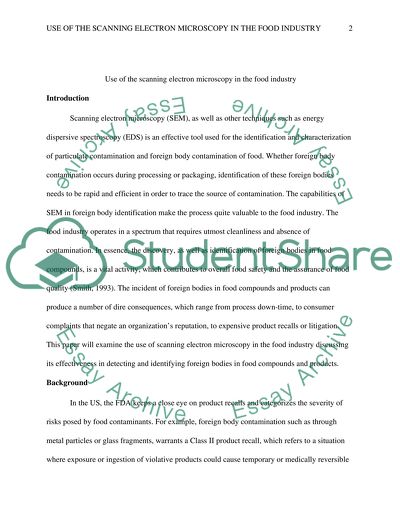Cite this document
(“Use of the scanning electron microscopy in the food industry Research Paper”, n.d.)
Retrieved de https://studentshare.org/biology/1462270-use-of-the-scanning-electron-microscopy-in-the-food-industry
Retrieved de https://studentshare.org/biology/1462270-use-of-the-scanning-electron-microscopy-in-the-food-industry
(Use of the Scanning Electron Microscopy in the Food Industry Research Paper)
https://studentshare.org/biology/1462270-use-of-the-scanning-electron-microscopy-in-the-food-industry.
https://studentshare.org/biology/1462270-use-of-the-scanning-electron-microscopy-in-the-food-industry.
“Use of the Scanning Electron Microscopy in the Food Industry Research Paper”, n.d. https://studentshare.org/biology/1462270-use-of-the-scanning-electron-microscopy-in-the-food-industry.


